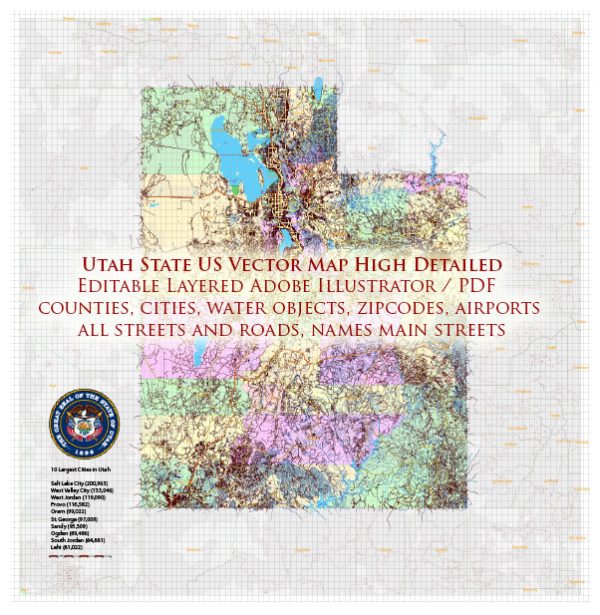Utah’s urban development history is characterized by a unique blend of factors, including the influence of the Church of Jesus Christ of Latter-day Saints (LDS Church), the discovery of natural resources, and the state’s role as a transportation crossroads. Here’s an overview of Utah’s urban development history:
- Mormon Pioneers and Settlements:
- The settlement of Utah began in earnest with the arrival of Mormon pioneers led by Brigham Young in 1847. They sought a refuge for religious practice and established Salt Lake City as the headquarters of the LDS Church.
- The Mormon pioneers engaged in meticulous city planning, creating a grid system with wide streets and large city blocks. This design is still evident in Salt Lake City’s layout today.
- Agriculture and Irrigation:
- The early economy of Utah was primarily agrarian, with Mormon settlers implementing innovative irrigation systems to cultivate the arid land successfully.
- Towns and cities developed around fertile areas where agriculture could thrive, and the establishment of cooperative systems supported community growth.
- Mining and Economic Diversification:
- The late 19th century brought a mining boom to Utah. The discovery of silver, gold, copper, and other minerals led to the rapid development of mining towns such as Park City and Bingham Canyon.
- Mining brought economic diversification and urban growth, contributing to the establishment of railroads and infrastructure to support the extraction and transportation of resources.
- Transportation Hubs:
- Utah’s strategic location as a crossroads in the transcontinental railroad system further fueled economic development. Promontory Summit in Utah was where the Central Pacific and Union Pacific railroads met in 1869, completing the First Transcontinental Railroad.
- The development of transportation networks, including railroads and later highways, facilitated the movement of people and goods, fostering urbanization.
- Post-World War II Growth:
- Like many parts of the United States, Utah experienced significant population growth and urban expansion after World War II.
- Salt Lake City, in particular, saw suburbanization trends, and the expansion of the aerospace and defense industries brought economic opportunities.
- Olympic Legacy:
- The hosting of the 2002 Winter Olympics in Salt Lake City had a profound impact on the state’s urban development. The event led to infrastructure improvements, including the expansion of transportation systems and the construction of sports facilities.
- High-Tech and Financial Sectors:
- In recent decades, Utah has become a hub for the technology and financial sectors. Cities like Salt Lake City and Provo have seen the rise of technology companies, attracting a skilled workforce and contributing to urban growth.
- Sustainable Development and Planning:
- In more recent years, there has been an emphasis on sustainable development and urban planning in Utah’s cities. Efforts have been made to balance growth with environmental considerations and quality of life.
Utah’s urban development history reflects a combination of religious influence, natural resource exploitation, strategic transportation advantages, and modern economic trends. The state’s cities continue to evolve, blending a rich historical heritage with contemporary urban planning and development.


 Author: Kirill Shrayber, Ph.D.
Author: Kirill Shrayber, Ph.D.